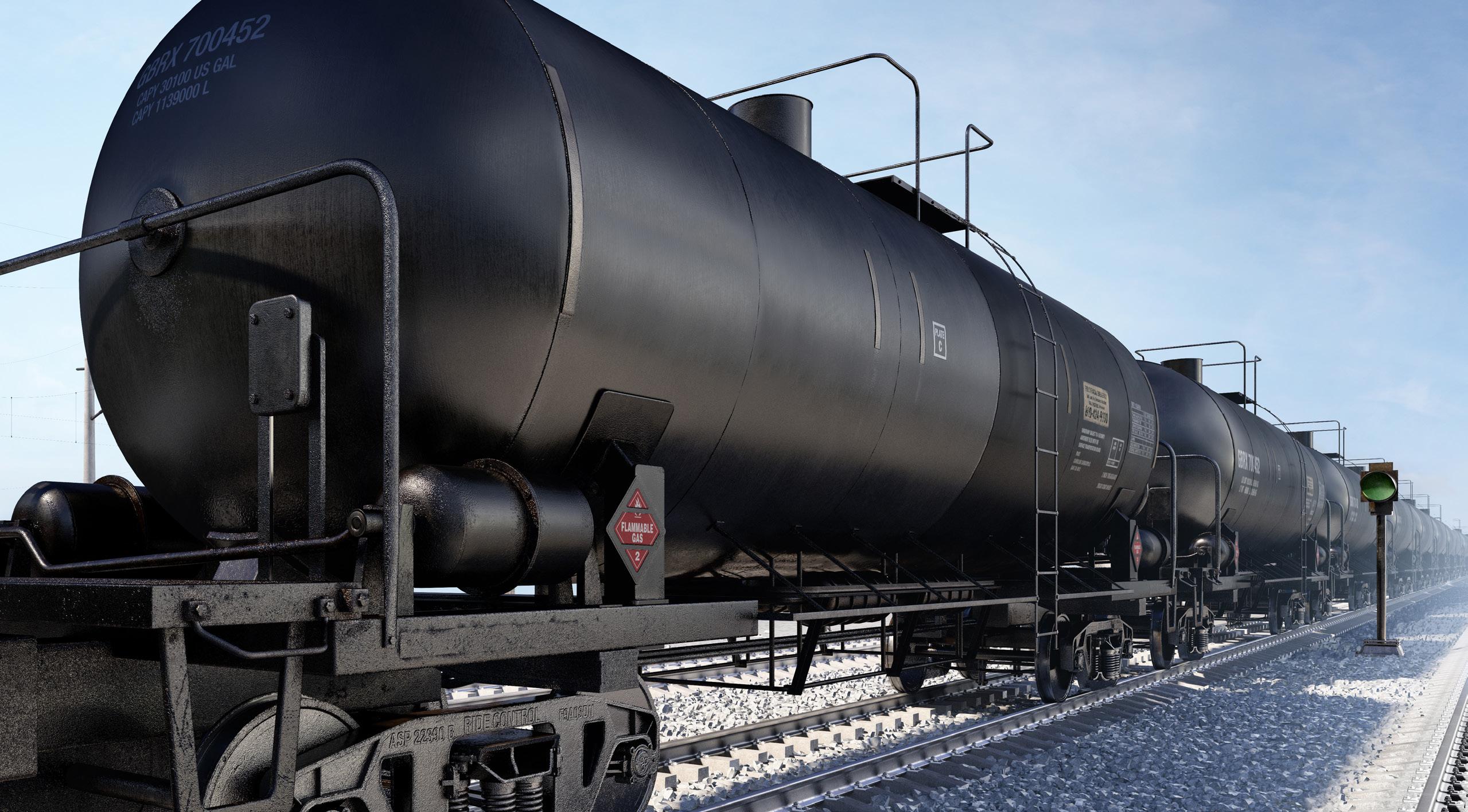
www.durlon.com
info@durlon.com




www.durlon.com
info@durlon.com


Evolution isn’t a choice in today’s business landscape, it’s the only way to succeed.
Progress relies on everything moving forward; from people to machinery to production. Everything must flow.
As we engineer our way to a better world, we are breaking down barriers, making sure each process is in place, always reflecting and improving. We are experts at delivering the best sealing solutions to help our customers unlock their highest potential.
Our global community of industry leading specialists drive our innovative production and materials to consistently raise the bar.
Whether through the stress of everyday use, or specialized applications and hightemperature environments, liquid or gas, our products deliver sustainable integrity.
At Durlon, we succeed when you succeed.
The railroad tank car industry plays a critical role in transporting liquids and gases across vast distances efficiently and safely. Their robust design and load capacity to serve a multitude of industries.
Transporting Chemicals & Petrochemicals:
These tank cars are essential for transporting a wide range of chemicals, including acids, solvents, fertilizers, and liquefied gases. The specialized tanks and fittings ensure the safe containment and transportation of hazardous materials, minimizing the risks associated with leakage or spills.
Chemical and petrochemical products often need to be transported in large quantities over long distances. Railroad tank cars offer a costeffective and efficient mode of transportation enabling the industry to distribute their products in a timely and cost-efficient manner.
Due to the highly corrosive nature of chemicals and petrochemicals during transportation, specialized containment systems are required. Railroad tank cars are constructed with materials and coatings that can withstand the corrosive nature of these substances, ensuring the integrity of the cargo and preventing contamination.
Key Factors:
• Safe transport of hazardous materials
• Efficient distribution
• Corrosion resistance
With the growth of oil production in various regions, railroad tank cars are instrumental in moving these resources from extraction sites to refineries and distribution centers.
To ensure secure and safe transportation of refined petroleum products such as gasoline, diesel fuel, and jet fuel, these cars are designed to meet the safety standards and regulations associated with flammable liquids. Tank cars are equipped with specialized fittings and proper venting systems to manage pressure changes during transportation.
By utilizing railroad tank cars, the oil industry can efficiently transport and deliver this valuable resource, contribute to the functioning of the oil and gas industry and the availability of energy resources.
Key Factors:
• Crude oil transportation
• Petroleum product distribution
Food and Beverage Industry:
Railroad tank cars are utilized for transporting liquid commodities such as vegetable oils, corn syrup, fruit juices, and dairy products. These tank cars are designed to meet stringent hygiene and safety regulations required for transporting food-grade materials, ensuring that the food and beverage products remain uncontaminated during transit.
By leveraging rail transportation, the industry can maintain a steady supply chain, ensuring that perishable goods reach markets and manufacturing facilities in a timely manner. This efficiency supports the industry’s ability to meet consumer demands and deliver a wide range of food and beverage products.
Key Factors:
• Hygienic transport
• Efficient supply chain
Railroad tank cars cater to industries such as pharmaceuticals, cosmetics, water treatment, and industrial manufacturing. They are utilized for transporting industrial chemicals, compressed gases, liquid nitrogen, liquefied natural gas (LNG), petroleum products, and more.
The versatility of tank cars allows for the transportation of different types of cargo, meeting the specific needs of various industries. These cars are equipped with specialized tanks, valves, and safety mechanisms to prevent leaks, spills, and other accidents during transit, ensuring secure delivery.
Tank cars are designed with features such as pressure relief systems, thermal insulation, and appropriate venting mechanisms. Additionally, rail terminals and facilities are equipped with the necessary infrastructure to load and unload these tank cars safely and efficiently.
Rail transportation of bulk liquids and gases offers environmental advantages compared to other modes of transport. Trains are more fuel-efficient and produce lower emissions per ton-mile, reducing the carbon footprint. By utilizing railroad tank cars, the bulk liquids and gases industry can contribute to sustainability efforts and minimize environmental impact.
• Efficient and cost-effective transport
• Safety, containment and handling
• Diverse cargo compatibility
• Environmental considerations
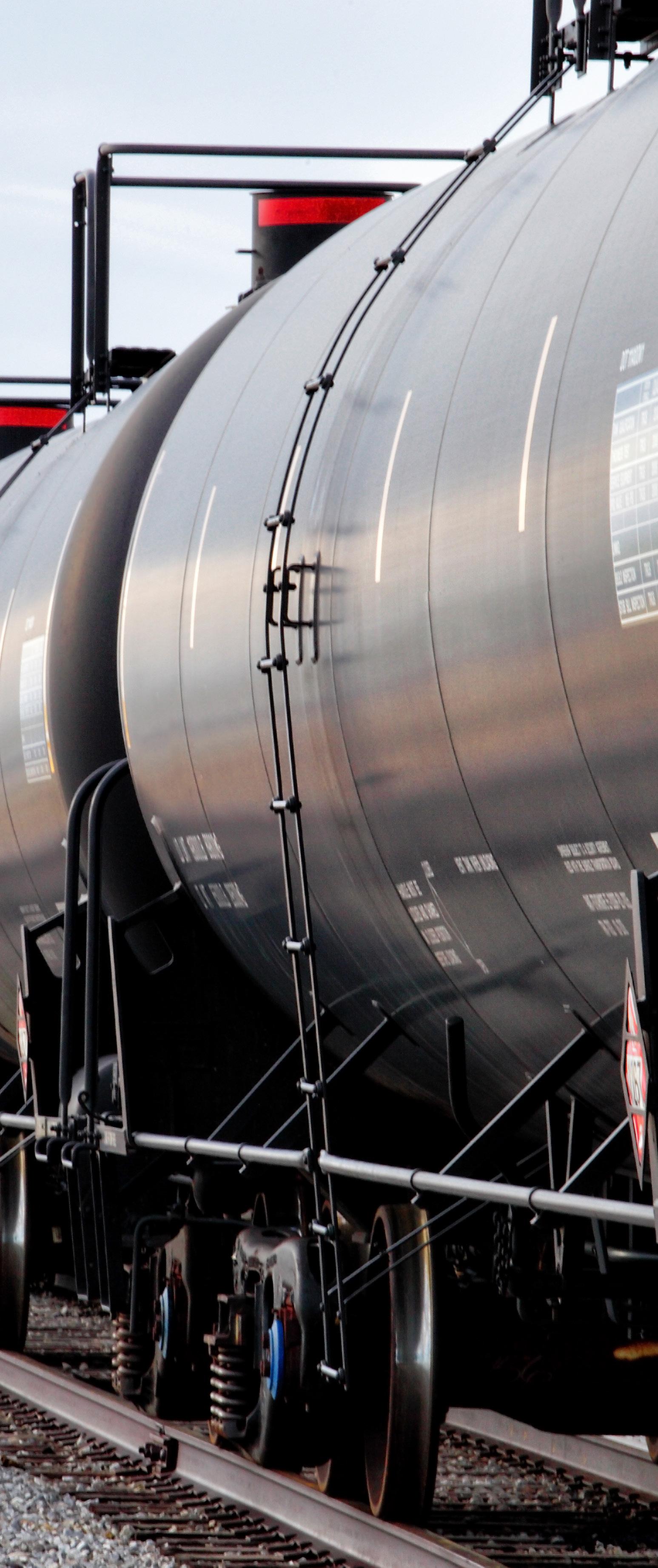
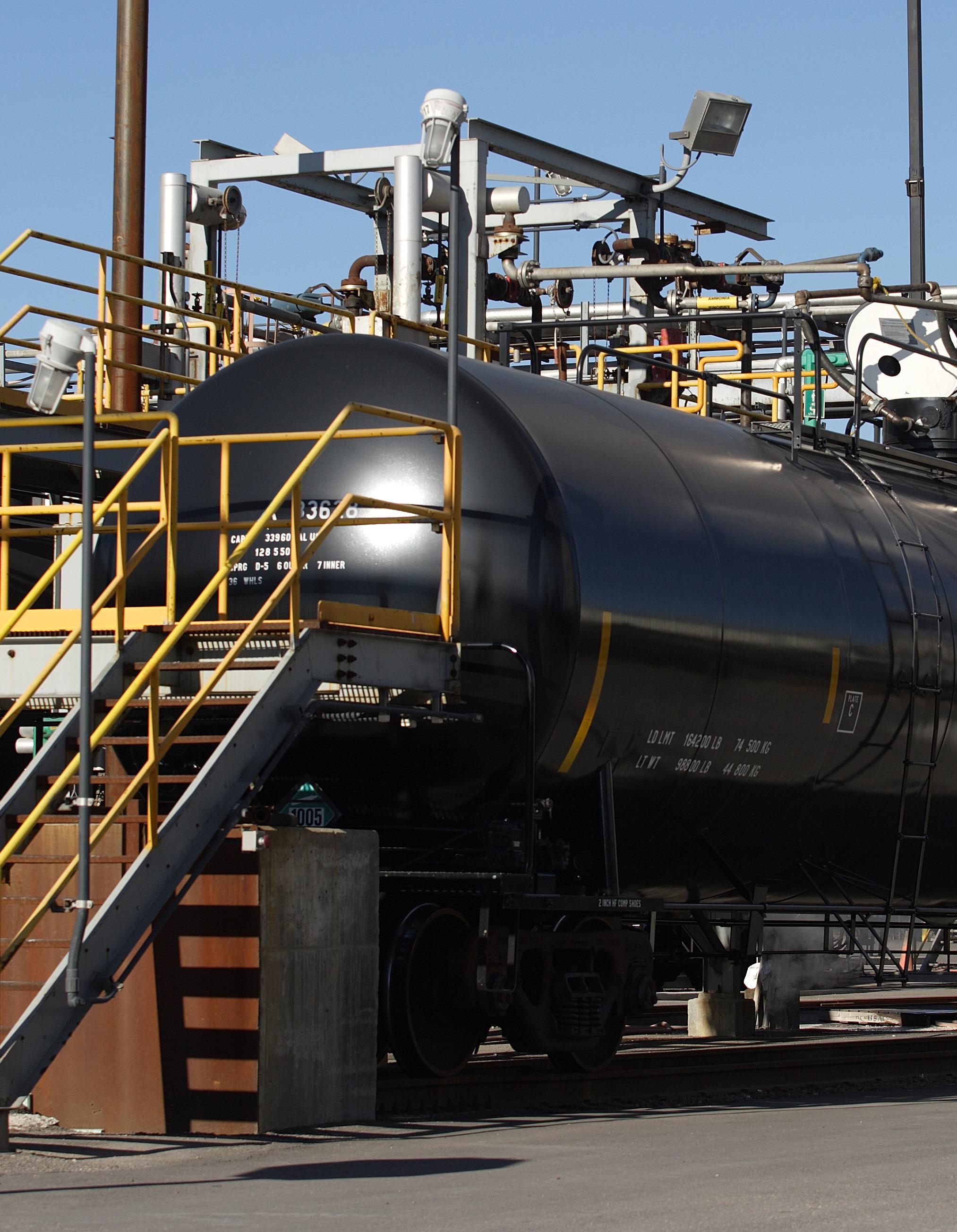
We provide high performance gaskets for rail tank car manways, components, and flanged connections for a wide range of applications in high temperature, air, water, acids, oils, steam, and various chemical environments.
Our large selection of polytetrafluoroethylene (PTFE), compressed non-asbestos (CNA), Viton® , a wide variety of elastomers and other synthetic rubber product technologies (including EPDM) are guaranteed to provide exceptional sealing properties.
Compressed Non-Asbestos is a sealing material consisting of a blend of organic and inorganic chemically resistant fibers and fillers together with an elastomer binder. The type of binder used is a key factor to consider when choosing a CNA sheet for gasketing applications.
Gaskets made from CNA sheets have excellent sealing characteristics, torque retention, heat, and chemical resistance. These types of gaskets are an excellent choice for applications involving water, air, steam, oils, acids, and general chemicals. Our high performance industrial non-metallic gasket material sheets - Compressed Non-Asbestos contain high-pressure and high-temperature aramid fiber materials that are perfect for sealing, thermal, and mechanical applications (petrochemical, chemical, steam, pulp & paper, pharmaceutical and potable water industries).
How does Compressed Non-Asbestos differ from elastomers?
An elastomer is a polymer which possesses an elastic property. Elastomers are generally thermoset materials which require curing through heat and pressure with the addition of sulphur or other curing agents. Natural and synthetic rubbers, such as styrene-butadiene rubber (SBR) and Buna-N (NBR), are elastomers.
Compressed Non-Asbestos, in contrast, is a material that combines organic and inorganic chemically
resistant fibers and fillers. This type of binder employed gives the sheet the properties of elasticity and flexibility, while the fibers used give the sheet specific sealing characteristics and properties.
Polytetrafluoroethylene (PTFE) gasket material
The unique properties of PTFE lend itself well for use in a variety of industrial, manufacturing, and engineering facilities. The superb chemical resistance and tolerance to vast temperature gradients has not only improved the efficiency of many industries, but the safety for the employees that work around those conditions as well.
Durlon® 9000 & 9000N PTFE
Various shapes of inorganic fillers have been homogeneously blended with pure PTFE resins to give Durlon® 9000 its physical and mechanical properties. It is suitable for use in steel flanges and will not exhibit the cold flow problems associated with virgin PTFE or the hardness problems of some other filled PTFE products. It cuts easily and separates cleanly from flanges after use.
Durlon® 9000 is for use in general industrial applications where resistance to highly aggressive chemicals is required. In addition, the shape of the fillers does not allow wicking which can cause corrosion on flange surfaces.
Our Durlon® 9000 sheet material was developed using the most sophisticated manufacturing process in the PTFE gasketing industry. Its extraordinary properties include superior sealability, torque retention and consistency, which offer exceptional value for rail shippers compared to other products that have less universal application, mechanical properties and chemical resistance.
Durlon® 9000 is manufactured in a contaminatefree environment. The process is computer controlled and follows strict quality control procedures, including ISO 9001 certification.
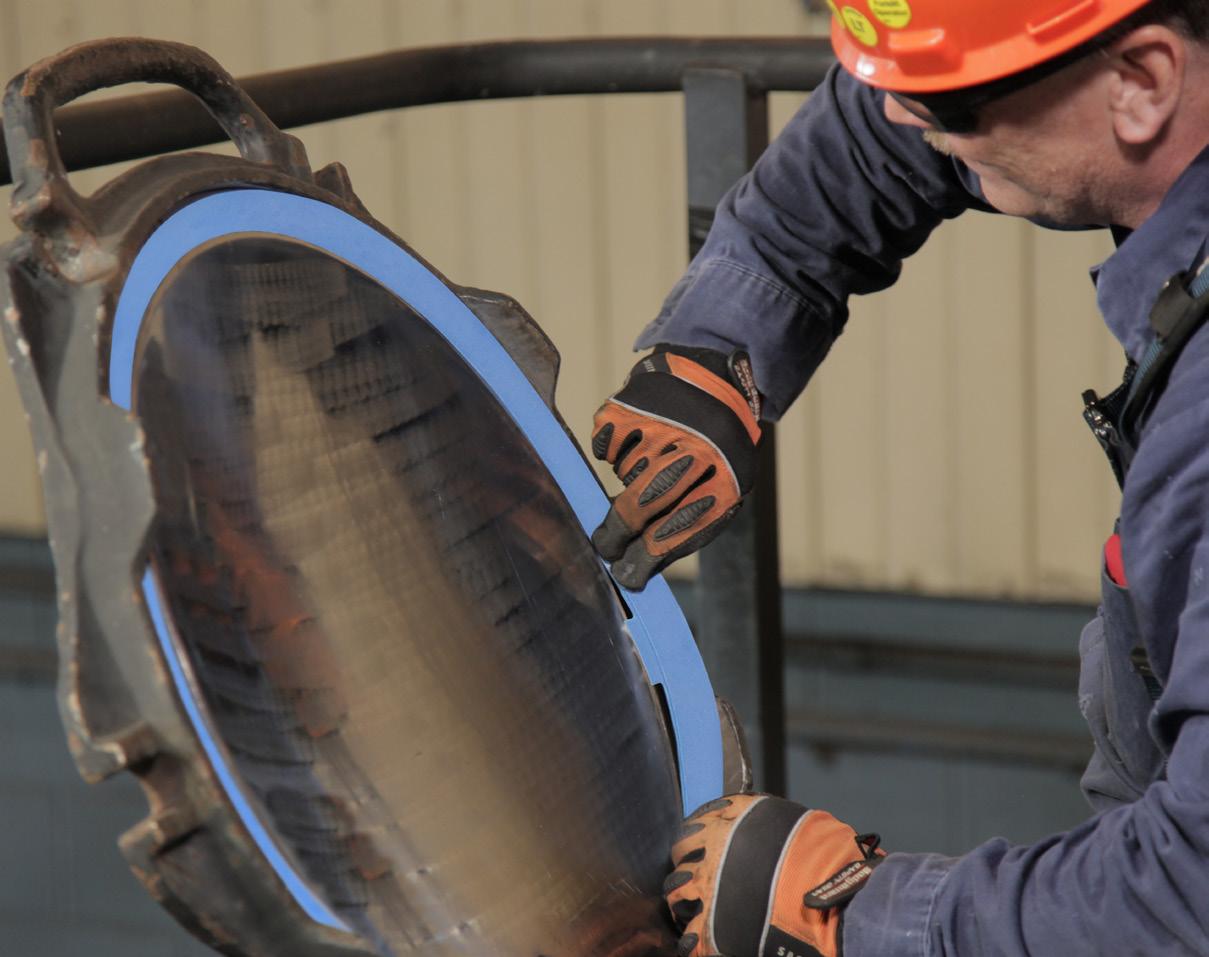
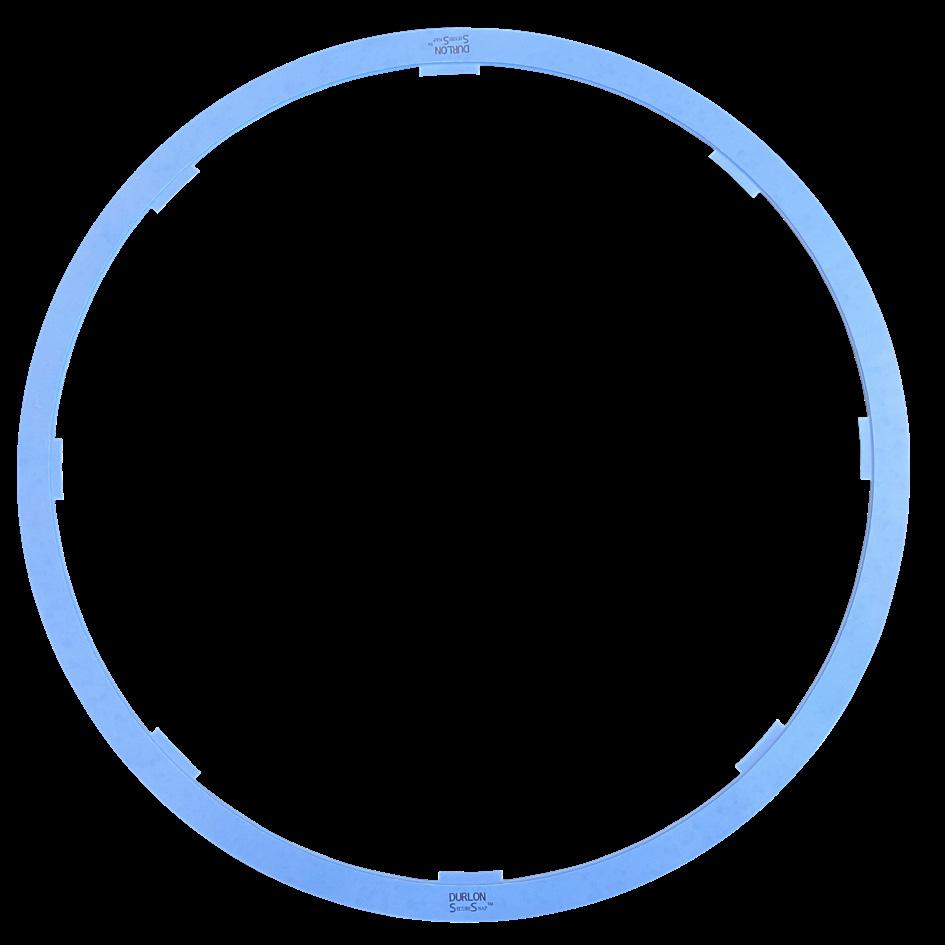

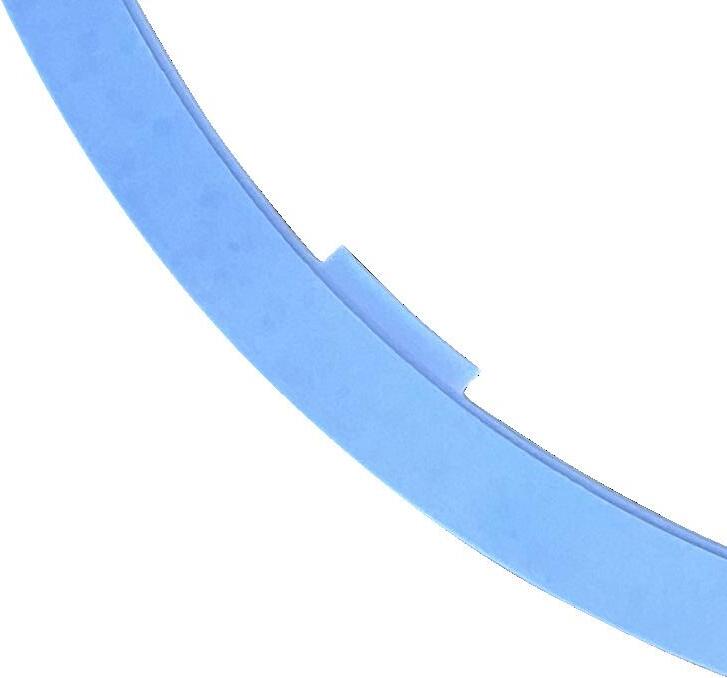
the SecureSnap™ gasket is significantly less than the time required to install a standard manway gasket.
A potential problem with a standard AAR-1 manway gasket is that the conventional design has to be precisely made with tight tolerances to fit snugly into a dovetailed groove so that it remains in place once installed. When this does not happen the potential for NARs is heightened. The required tolerances for these conventional style gaskets are difficult to achieve, and create quite a bit of scrap during the manufacturing process. In addition, if the ID is too small, installation becomes difficult if not impossible. On the other hand, if the ID is too large the gasket will easily fall out of the groove and into the manway nozzle. The result of this happening will cause leaks, splashes, and other releases from an improperly secured manway cover.
The increased flexibility of the SecureSnap™ manway gasket enables the user to install the gaskets more quickly than the conventional gasket. The tabs allow for the SecureSnap™ manway gasket to easily snap into the dovetail groove. Thus, the time required to install
Utilizing a patent pending manufacturing process, the SecureSnap™ technology incorporates the Durlon® 9000 sealing features as well as elastomer gasketing material to help insure a tighter seal and superior bolt load retention in less than ideal bolting conditions.
The flexibility of the SecureSnap™ manway gasket also renders the gaskets more versatile than the conventional gasket. The SecureSnap™ gasket will accommodate more than one style of manway system (dependent on end user approval) meaning that distributors can stock one size of gasket for multiple manway designs, therefore reducing inventory and overall cost.
For Physical Properties and Certifications of SecureSnap™ gasket material, refer to page 15.
We provide high performance industrial rubber molded gaskets for rail tank car manways, components, and flanged connections. Our large selection of fluoroelastomer elastomers and other synthetic rubber product technologies are guaranteed to provide exceptional sealing properties for a wide range of applications and various commodities.
Our technicians will work with your company to customize materials that meet all specifications in the colors and durometers necessary. All products undergo rigorous testing processes through every level of production and final leakage detection.
Our extensive knowledge of compression molding techniques as well as our state-of-the-art research and development facility allow us to provide innovative and extensive sealing solutions that are practical and adhere to international safety protocols and standards. We pride ourselves on the production of durable and high-performance rubber molded parts for the most challenging applications.
All molded gasket materials are manufactured in conformance to our Quality Management System and are subjected to rigid testing and quality controls.
Molded Gasket Capabilities: Sizes:
• AAR-1
• TRN-1
• Collar Lid Style
• Max size up to 26.5” OD
Availability:
Materials:
• Viton® A + B
• EPDM
• NBR (Nitrile)
• Neoprene
• Various colors, hardness and thickness
• Other material grades & FDA compliant materials are available
• Private branding (tooling may be required)
• Quick turn-around times
• Applicable material batch test reports (available upon request)
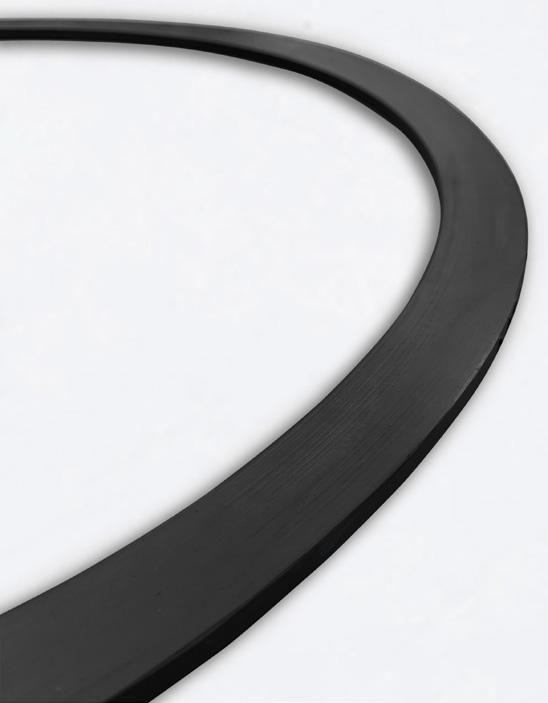
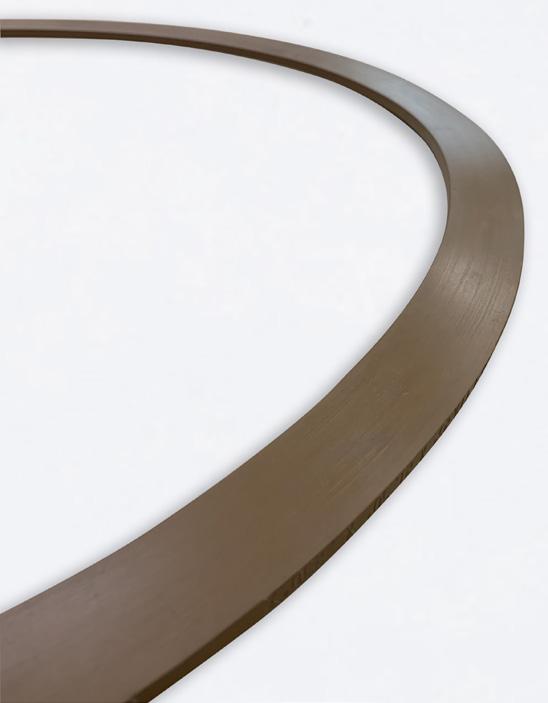
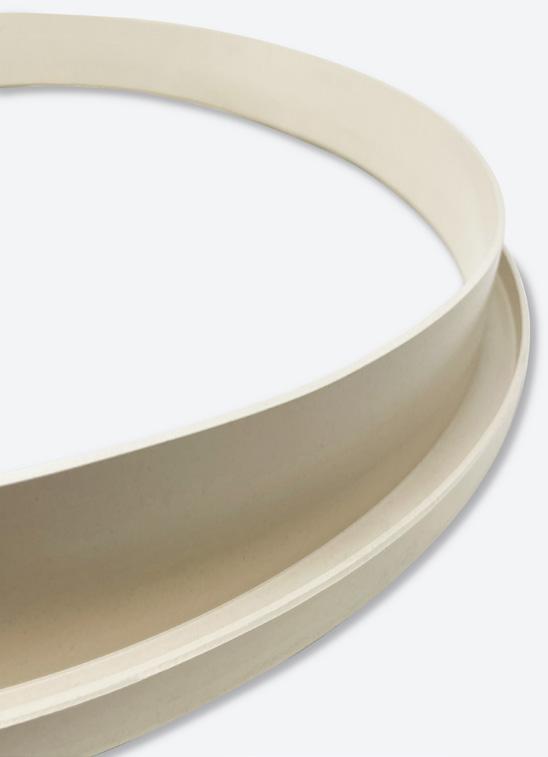
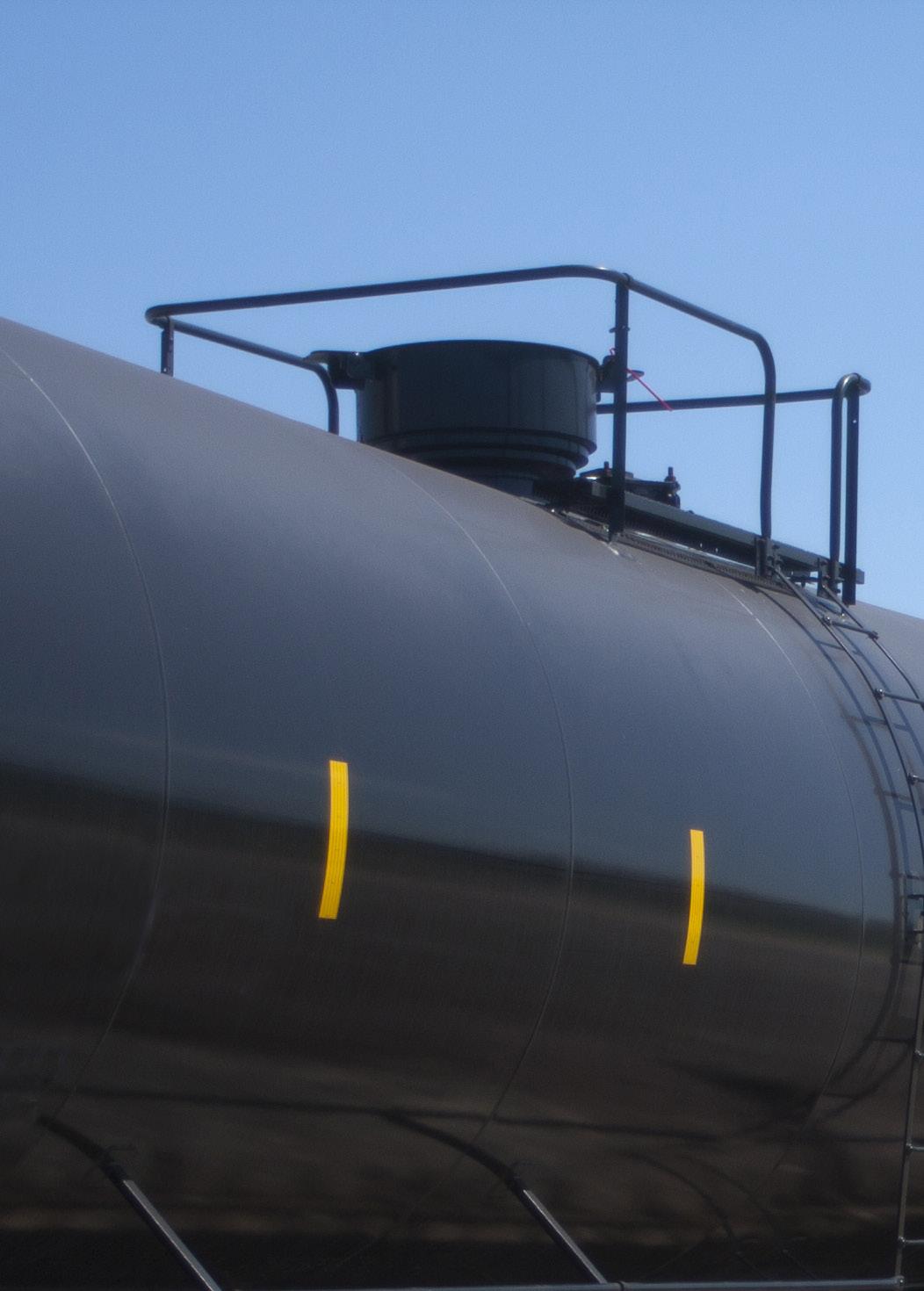


Tank Car Manway Nozzle Gasket
• Independently tested and proven to provide greater overall compression as well as a more uniform seal about the manway nozzle.
• Available in 20” size.
• Available in Viton A, Viton B EPDM, Neoprene (CR), Nitrile (FDA Compliant option available).
• Can be used in place of manway cover gaskets.
• Easy, glue-free installation allows for simple cleaning or replacement.
• Long inner leg secures to the manway nozzle, holding the gasket in place.
• “J” shaped profile eliminates gasket from falling into tank car during installation.
*Other colors available upon request.

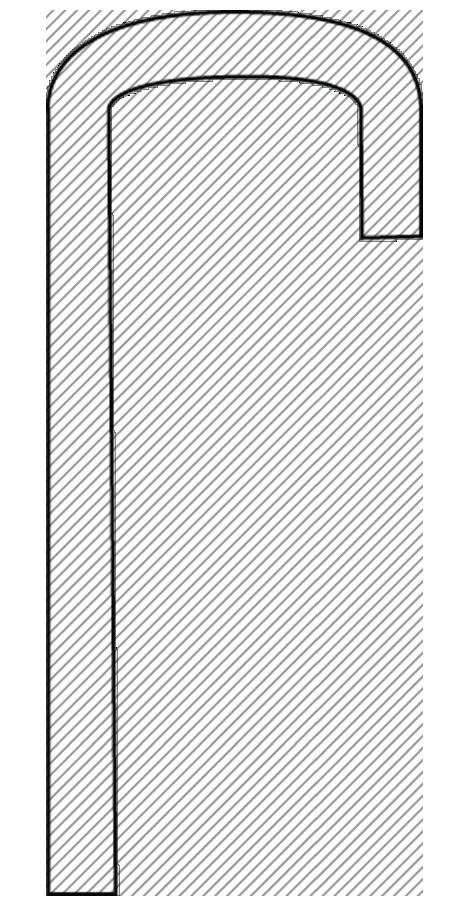
Customer:
Location:
AAR Manway Style:
Tank Car No.
Part No.
Gasket Dimensions: (Refer to GRI/TFC MW Gasket Style/Size Chart)
Gasket Material (Durlon® CNA & PTFE materials are “Hard” manway gasket styles as noted in Appendix D of M-1002)
(Circle One): Durlon® 9000 Durlon® 9600 Durlon® 8500
Eyebolt Grade: (Circle One): A307 A449 A193-B7 A193-B8/B8M Class 2 Eyebolt Diameter:
Lubrication Used:
Assembly Sequence
Assembly Torque:
• Pre-tightening. Hand tighten lubricated eyebolts then 1/4 turn with a hand wrench.
• Three star pattern tightening sequences in either a 6-bolt or 8-bolt pattern, increasing the torque in each sequence per the chart on the right.
• A rotational pass at full torque to equalize the stress on each eyebolt.
• Optional. Retorque after 4-24 hrs.
WARNING: Bolts must be tightened in the cross-pattern tightening sequence, employing the incremental rounds of tightening as prescribed in this procedure. If this is not done, the flanges may become out of parallel relative to each other, an indicator of nonuniform gasket loading and potential joint leakage.
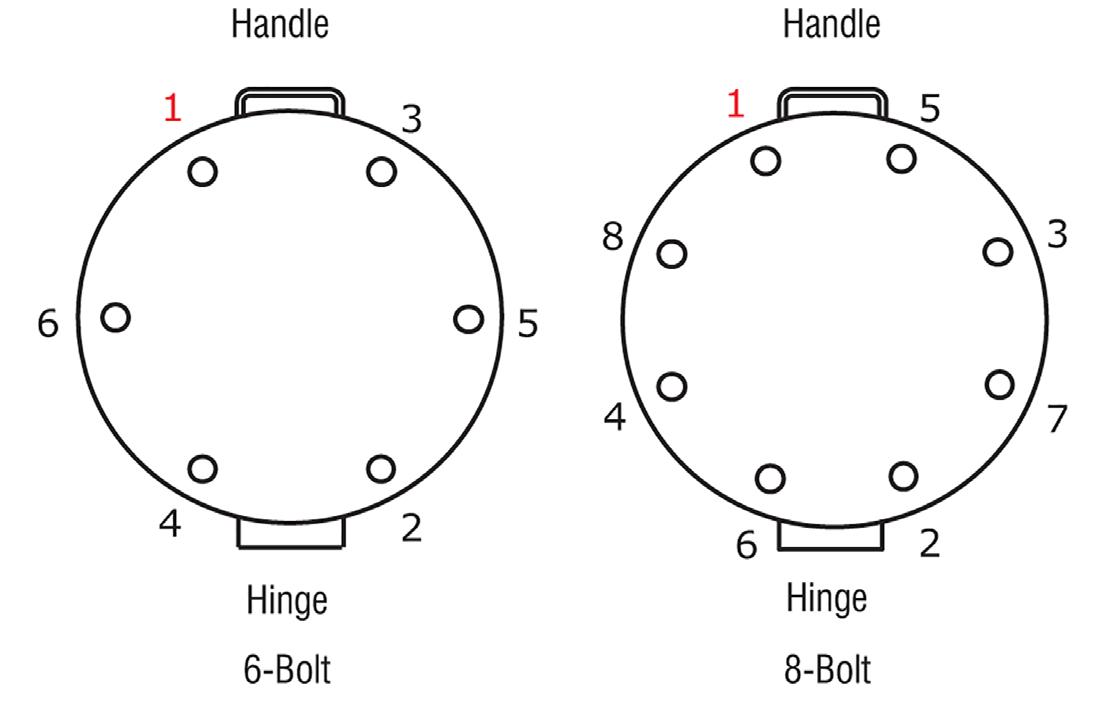
then 1/4 turn
then 1/4 turn
Retorque after 4 to 24 hrs. A large percentage of the short-term bolt preload loss occurs within 24 hours after initial tightening with most occurring after 4 to 5 hours. This Round recovers this loss. Failure To Pre-Tighten The Nuts Result In Flanges That Are Not Parallel, And Could Result In Possible Leakage.
Joint Assembler:
For questions contact tech@durlon.com
Date:
Warning: These materials should never be recommended when both temperature and pressure are at the maximum listed. Properties and applications shown are typical. No application should be undertaken by anyone without independent study and evaluation for suitability. Never use more than one gasket in one flange joint, and never reuse a gasket. Improper use or gasket selection could cause property damage and/or serious personal injury. Data reported in this brochure is a compilation of field testing, field service reports and/or in-house testing. While the utmost care has gone into publishing the information contained herein, we assume no responsibility for errors. Specifications and information contained in this brochure are subject to change without notice. This edition cancels and obsoletes all previous editions.
9000 (Hard Dims)
Manway Cover
Dims)
Number of bolts, bolt grade and lubrication can vary. *Contact GRI Technical Services for additional information. Revised May 2017
Manway
Angle Valve / Gauging Device (C)
Durlon® 9000
PRD/Safety (C) Durlon® 9000
K = 0.15 represents a nickel anti-seize type lubricant. K = 0.17 represents moly anti-seize type lubricant. K = 0.132 represents a copper anti-seize type lubricant. (C) designates torque using a crow’s foot wrench. For torque worksheets by component or car set, contact GRI Technical Services.
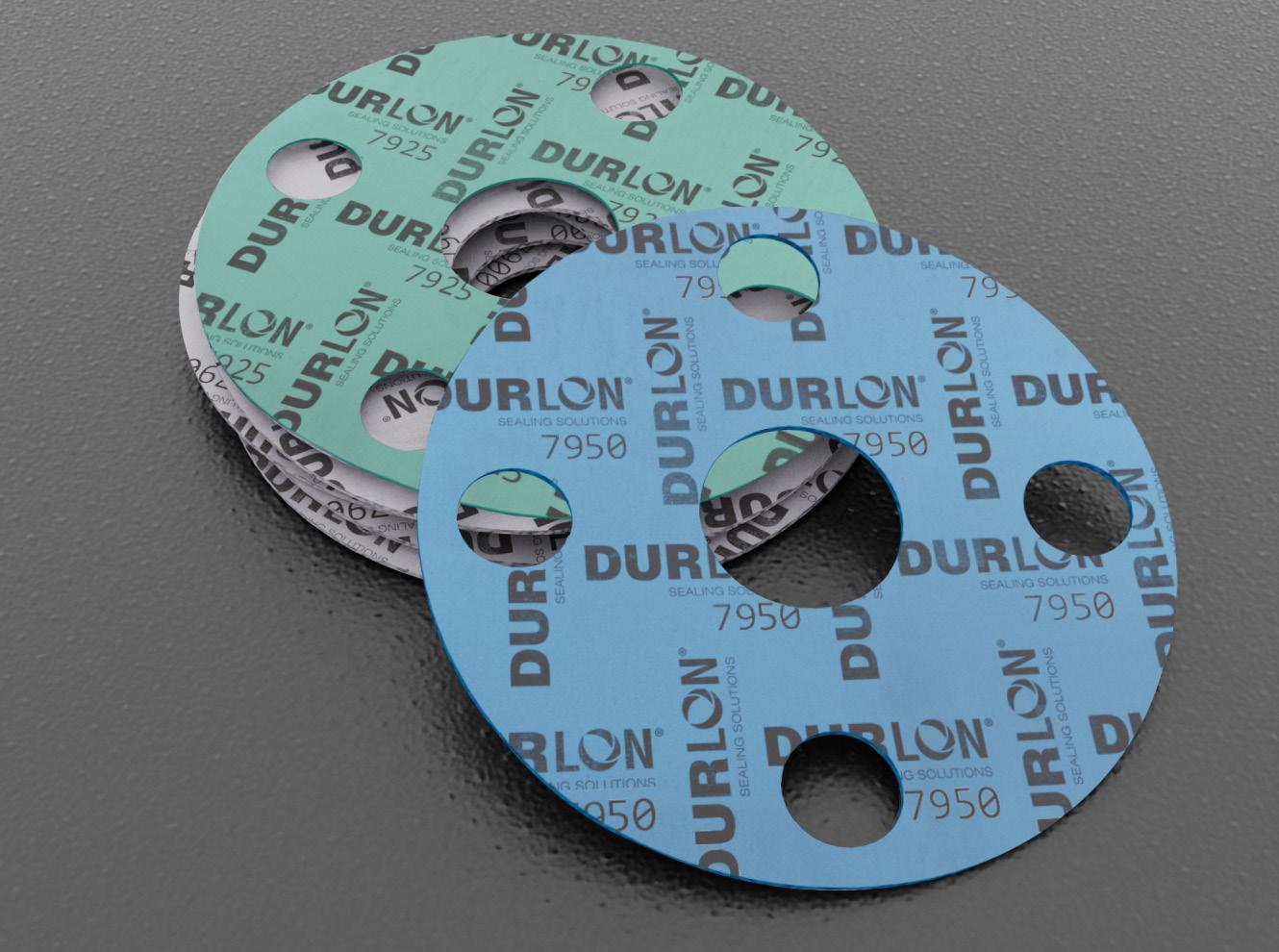
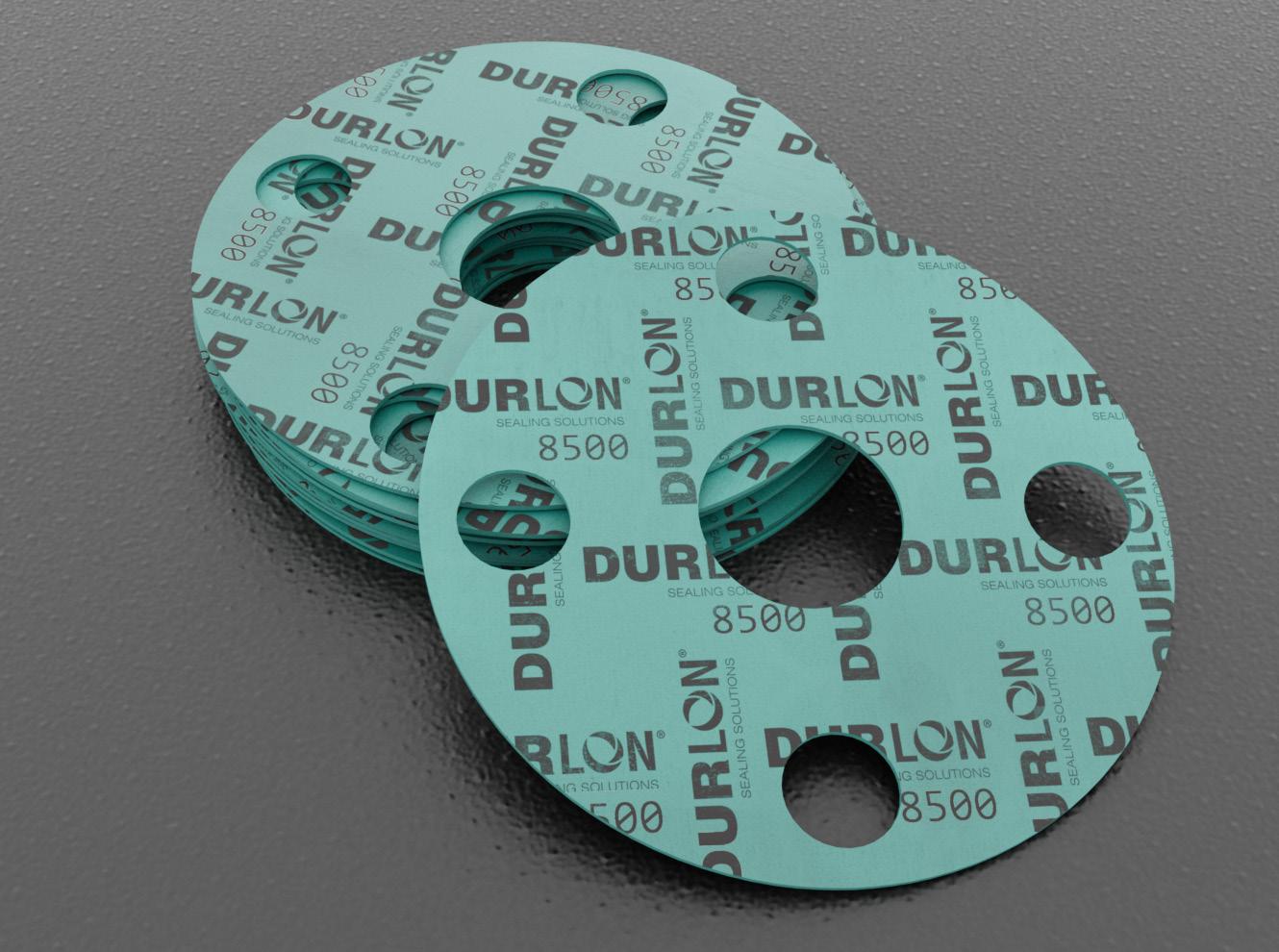
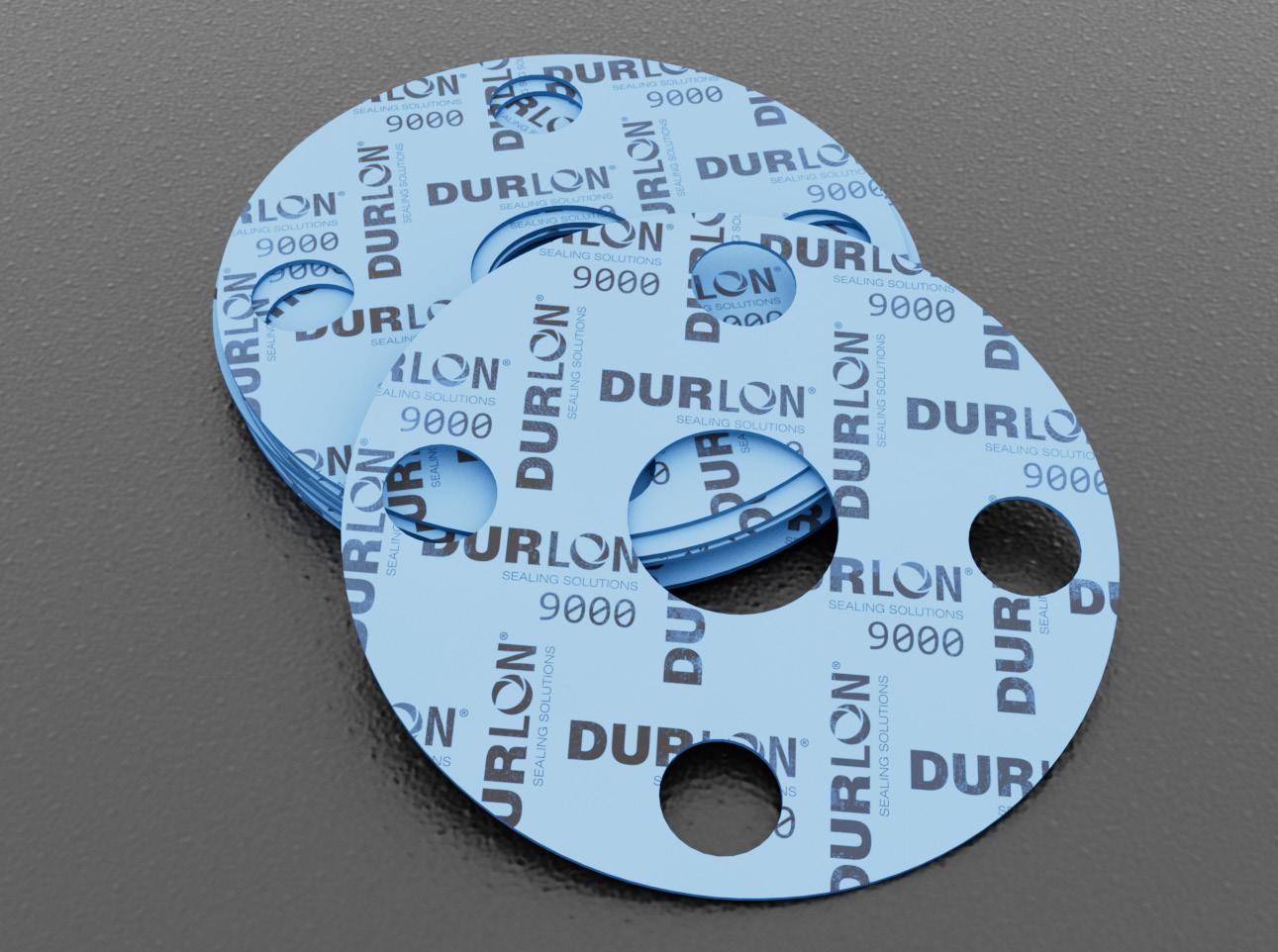
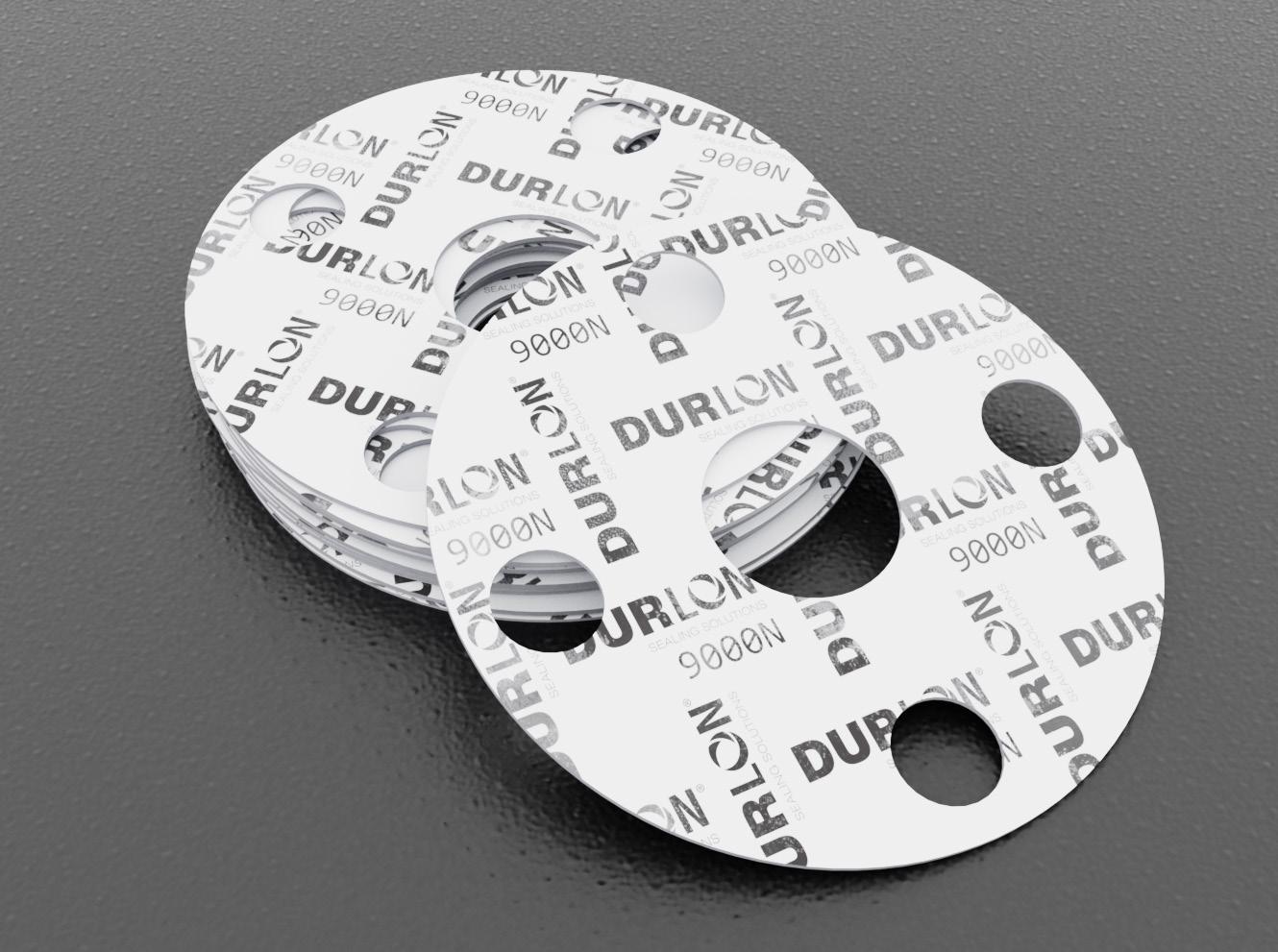

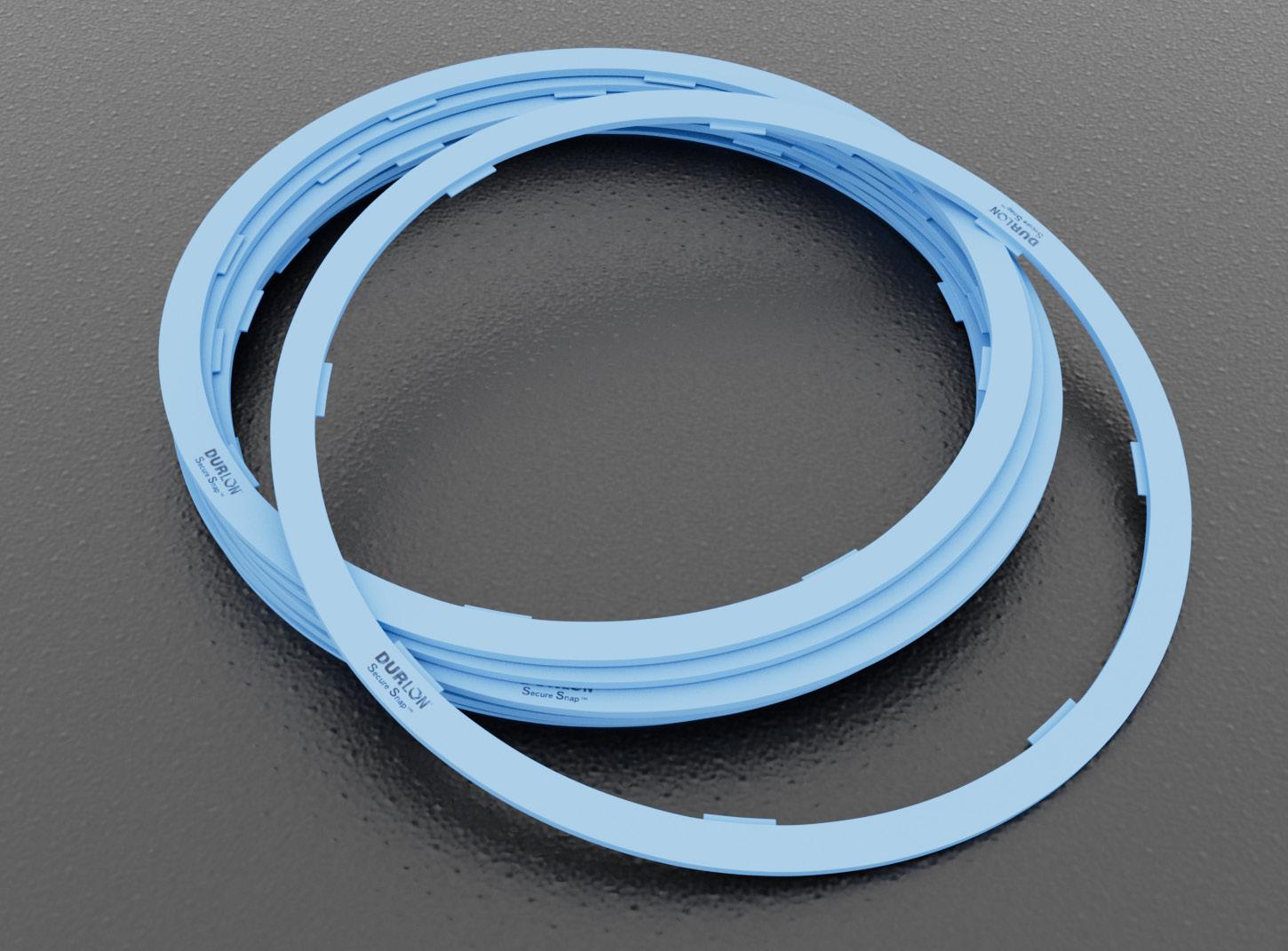
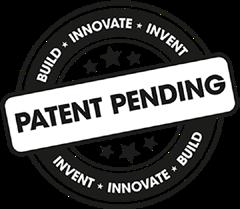
79XX
8500
9000 & SecureSnap™
(-40°F)
(700°F)
California Proposition 65, RoHS Reach Declaration
California Proposition 65, RoHS Reach Declaration, API 6FB Fire Test with avg. temperature >650°C, 30 minutes, 40 bar, 1 ml (inch/min.) max allowable leakage, Conforms to the FDA requirements of 21 CFR 177.2600.
Passed API 6FA, 3rd Edition Fire Test, Met requirements of 121ºC (250ºF) for USP for Plastic Class VI, Conforms to required 21 CFR 177.1550 for FDA, TA-luft (VDI Guideline 2440) approved material, ABS-PDA & Pamphlet 95 approved material - chlorine institute, (EC) 1935/2004 & EU (10/2011) approved material.
9000N USP Class VI 121°C (250°F) for 30 min., Approved material for ABS-PDA, (EC) 1935/2004 & EU (10/2011), and conforms to FDA requirements of 21 CFR 177.1550 for food and drug contact
TA-luft (VDI Guideline 2440), BAM Oxygen Service, ABS-PDA & Pamphlet 95, (EC) 1935/2004 & EU, Blow-Out & DVGW approved materials, and conforms to FDA requirements of 21 CFR 177.1550 for food and drug contact.
Note: ASTM properties are based on 1/16” sheet thickness, except ASTM F38 which is based on 1/32” sheet thickness. This is a general guide only and should not be the sole means of accepting or rejecting this material. The data listed here falls within the normal range of product properties, but should not be used to establish specifications limits nor used alone as the basis of design. For applications above Class 300, contact our technical department.
Warning: Durlon® gasket materials should never be recommended when both temperature and pressure are at the maximum listed. Properties and applications stated are typical. No applications should be undertaken by anyone without independent study and evaluation for suitability. Never use more than one gasket in one flange joint and never reuse a gasket. Improper use or gasket selection could cause property damage and/or serious injury. Data reported is a compilation of field testing, field service reports and/or in-house testing. While the utmost care has gone into publishing the information contained herein, we assume no responsibility for errors. Specifications and information contained within are subject to change without notice. This edition cancels and obsoletes all previous editions.
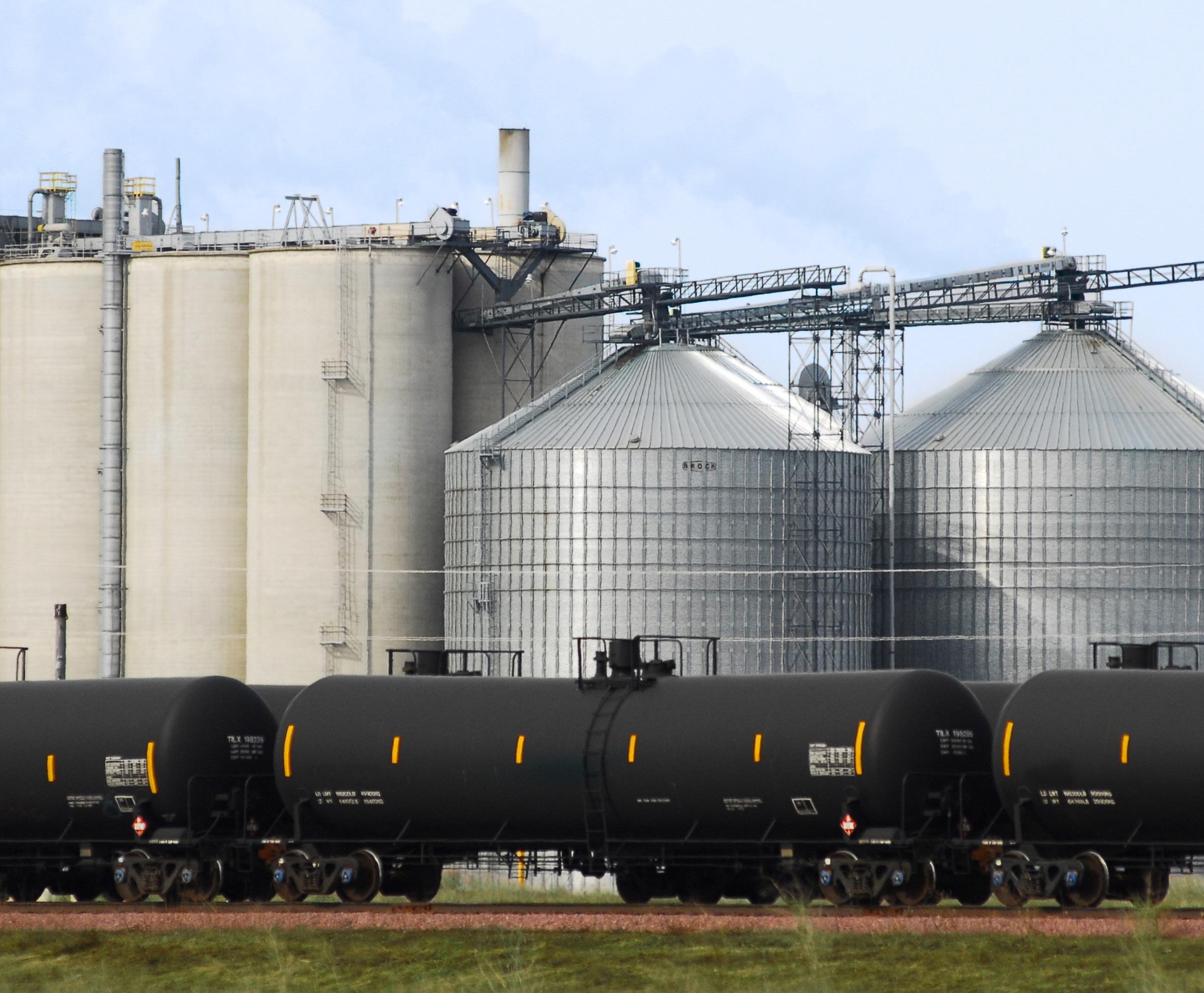
The core of the Durlon® brand is to provide fluid sealing solutions that make sense, both financially and strategically. We accomplish this through process-oriented design, sector-specific knowledge, and extensive testing. Our goal is to ensure
performance and safety while adhering to the quality management system registered to ISO 9001:2015.
At Durlon, we offer specially developed sealing solutions tailored directly to your specific needs.
Distributed by: